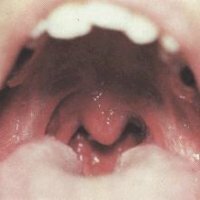Methods of treatment of elephant leg

Most cases of elephantiasis are recorded in areas of the subtropical and tropical climate. For temperate regions of the world, this disease is quite rare. However, there are no isolated cases of elephantiasis of the shin in Russia.
Features of Lefthandiasis of the shin ( leg elephantiasis):
The elephantiasis of the leg begins with a small swelling that gradually increases in size: it first falls off, then again manifests itself, after a few years the shin increases in size by 2-3 times. By this time the ankle is swelling, and the disease begins to move to the foot. With the described clinical picture, the leg becomes similar to the elephant's limb, for which the disease got its name - elephantiasis. There are no threats to human life from elephantiasis, but the disease, of course, significantly reduces the quality of life of the patient due to difficulties in movement and unaesthetic appearance. In addition, often elephant leg is combined with erysipelas.
Methods of treatment of calf elephantiasis.
In modern medicine, there are the following methods of treating elephant leg:
- wearing a bandage on the affected area;
- lymphatic drainage massage of the area affected by elephantiasis;
- reception of antibiotics;
- reception of homeopathic remedies;
- physiotherapy procedures;
- therapy with carbon dioxide using laser technology;
- adherence to a special diet for patients with elephantiasis;
- therapeutic and rehabilitation gymnastics;
- prophylactic measures, etc.
Surgical methods.
In particularly severe cases, surgical methods are used to treat elephantiasis of the lower extremities and other organs. Surgical intervention is one of the most complicated tasks of modern medicine. Distinguish the following methods of surgical treatment of elephantiasis: palliative and radical.
Radical surgical methods imply the complete removal( excision) of all altered tissues in the affected area with the fascia and further closure of the surgical defect with a skin graft.
Palliative surgery involves surgical intervention, in which partial excision of affected tissues is performed, and lymphatic drainage is improved by a variety of drainage modifications.
Radical method of surgical intervention is used for particularly severe lesions. But if elephantiosis is sick to a child or an elderly person, with other comorbidities that exist, and if patients abandon the radical method, palliative care is chosen as a cure.
With the radical method of treating elephantiasis there is excision of connective tissues, skin and subcutaneous tissue, fascia covering the internal organs. With this type of operation, various complications, a poor cosmetic effect and a prolonged stay in the hospital are possible.
Today there are specialized clinics with modern equipment and the latest technologies for the treatment of elephantiasis of different parts of the body. The aim of the techniques used in such clinics is to minimize the traumatism of the skin, create conditions that promote a good outflow of lymph, and achieve rapid and effective decompression, immediate and remote. This allows breaking the vicious circle: a violation of the outflow of lymph leads to an increase in pressure inside the tissues, which contributes to the development of fibrosis and erysipelas of the skin;These pathological changes, in turn, lead to even more large-scale and progressive disorders of lymphatic drainage of tissues.
Everyone knows that the disease is easier to prevent than to treat it later. Methods of modern diagnostics make it possible to identify tissue damage by filarias in the early stages. This significantly reduces the likelihood of developing this terrible disease.
The first signs of elephantiasis are permanent or periodic itching in the region of the shin or thigh. A frequent manifestation of elephantiasis is also a patchy-nodular rash on the skin, accompanied by severe itching. In all these cases, you need to see a doctor, because "on the face" the primary symptoms of filariasis scabies caused by parasites.
In the case when the area of defeat of worm larvae is extensive, it becomes a "lemon peel", and depigmentation occurs on the front surface of the shin. Over time, the skin begins to take on a senile appearance: it becomes dry, gradually atrophy. The presence in the lymph nodes of living or dead larvae leads to the appearance of edema and proliferation of connective tissue. It is important not to miss the first signs of the onset of elephantiasis, because this disease is not difficult to prevent. For this purpose, a survey is carried out with modern equipment, several samples of the superficial skin and from deep layers are taken for analysis, and the location of helminth larva localization in these skin samples is revealed. Eventually, the parasite is removed from the body, for example, by opening an onchocercioma or subcutaneous nodes, where helminths are localized.



